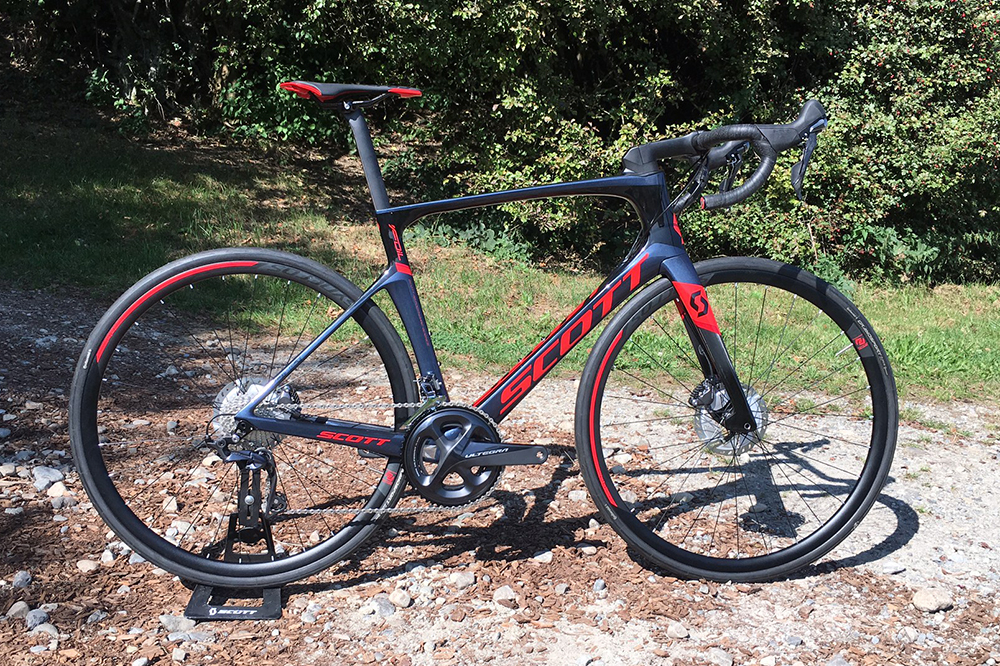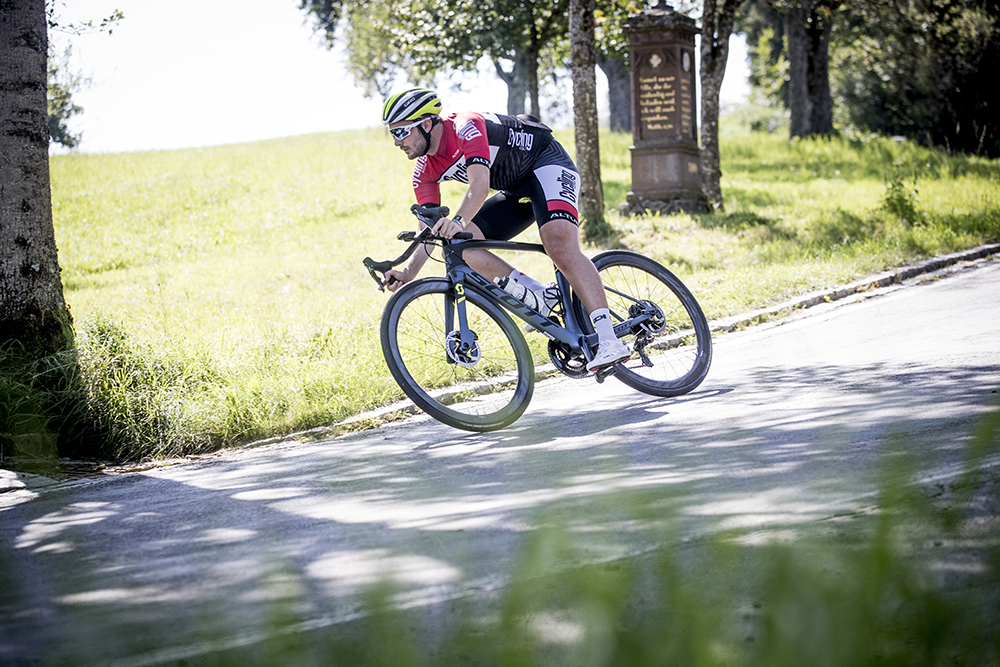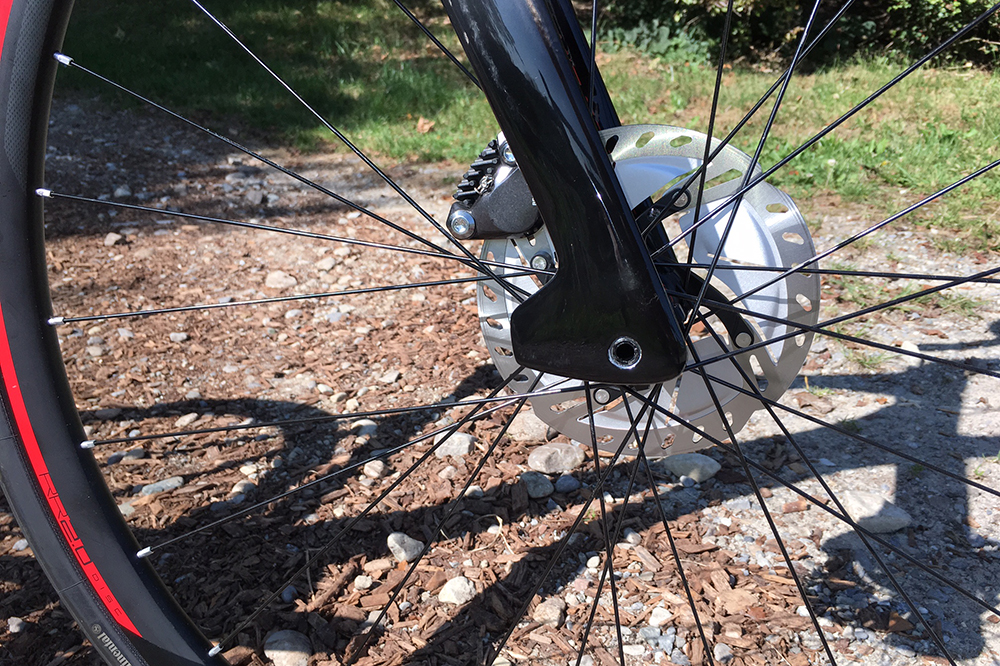New Scott Foil launched with disc brakes (video)
Scott has become the latest major bike manufacture to bolt on discs to an updated version of its aero dedicated machine, the Scott Foil

Scott Bikes has now completely submerged itself into the disc braking world by adding the Scott Foil aero bike to its already established Addict RC disc race bike and Addict range - including the women's Contessa ranges.
Scott say it sees other types of racing or transport, i.e motor racing or motor bike racing, using disc brakes to enhance performance or ensure lap-by-lap predictability, power and control, so why not on push bikes too? Scott believes that discs are the future and will now offer this technology on all of its bikes.
The new Scott Foil is a complete race bike - like Pinarello say about the F10 - it isn't all about aerodynamics. It strikes a balance between all the attributes of aero, lightweight, power, control and comfort.

For the new disc equipped Scott Foil, control is the most important and this is why the inclusion of disc brakes has occurred on the new aero Foil.
Scott Foil Aerodynamics
The frame remains largely the same, although there has been a rework to the chainstay and the Foil has a completely new fork.
The first Scott Foil had a special profile which is patented; it basically has a transitional radium on the trailing edge of the tube that helps the aerodynamics flow smoothly. This was defined by CFD testing, and after 10 different tests, the best were taken into the wind tunnel.
The latest race content, interviews, features, reviews and expert buying guides, direct to your inbox!

The most important part of the frame in terms of drag is the seat tube, head tube and fork (10-18 per cent depending on the yaw angle on the forks). So it was very important to keep the this performance after adding discs.
Disc brakes are not aerodynamic admitted Scott - on average you lose three watts - so Scott wanted to ensure it brings performance from the braking yet allows for the same aero performance of the rim version. Three watts equate to - on Scott's calculation - nine seconds over 40km at 48kph.
How did Scott do this? With its fork of course...
Scott widened the fork so the disc calliper is now hidden behind the fork, saving drag and by simple having a removable quick release on the thru-axle saves some more drag. Scott claims that this bike is as aerodynamic as its rim brake version. Fairly large fins extend from the front fork too.

The totally new fork is one piece moulded carbon with no bonded drop outs seen on previous Scotts. This saves a little bit of weight and adds more strength. It is a little bit bulkier than the rim brake version to handle the braking forces of the discs but Scott say it is all about the process not totally about materials used.
The chainstays also benefit from beefier tubing to handle stresses with a slightly different shape to that of the rim version.
Weight
Surprisingly, Scott with the new Foil has managed to keep the system weight down and only increases it by 40 grams over its rim brake brother. Forks with disc adds a mere 15 grams compared to the rim brake fork and the chainstay / frame only adds 25 grams over the rim version. This means the total weight for a 56cm frameset under the 1kg mark at 985 grams.
A total weight for a top-end build of the new Scott Foil will come in at around 7.2kg for a 56cm frame.
Stiffness and comfort
It is claimed that the new bike is as stiff as previous Foil. Around the BB and head tube it remains the same, though due to the bulkiness of the fork, it actually increases its stiffness a little bit.
The Scott Foil was in fact the first dedicated aero road bike to win the Paris-Roubaix under the control of Mathew Hayman two years ago.
With layup techniques and using different tube shapes - like the slender head tube and seat tube - it allows for small amounts of flex and also uses the same lowered rear stay design we now see on all of the BMC and Specialized frames to ensure comfort and compliance is at its best without compromising other attributes of the frame.

With 30mm tyres clearance and wheels specced with 28mm tyres you'll be able to find some comfort here too.
Technical details
The new Foil has some nice details throughout the frameset. It has followed the usual thru-axle format (100x12 front 142x12mm rear axle). However, it uses a 1.5mm pitch (standard is 1mm), with more pitch meaning fewer turns to remove the axel for faster wheel changes - a nice idea.
The rear hanger is the same hanger for all bikes, although you can purchase either the standard or the longer version which will help with wheel extract when using the Shimano direct mounts.
Another nice touch is the rear wheel guide; both sides of the frame have small groves that helps catch the hub caps and this aims to help for quicker wheel changes during races.
The new bike will hopefully be raced - barring any UCI stoppages - by a few riders of Orica-Scott at the Tour of Britain.
Scott Foil Range
| Bike Foil Premium disc | £10,999 | Row 0 - Cell 2 | |
| Bike Foil RC | £5,999 | Row 1 - Cell 2 | Row 1 - Cell 3 |
| Bike Foil 10 disc | £4,299 | Row 2 - Cell 2 | Row 2 - Cell 3 |
| Bike Foil 10 | £3,799 | Row 3 - Cell 2 | Row 3 - Cell 3 |
| Bike Foil 20 disc | £3,299 | Row 4 - Cell 2 | Row 4 - Cell 3 |
| Bike Foil 20 | £2,899 | Row 5 - Cell 2 | Row 5 - Cell 3 |
| Bike Foil 30 | £2,499 | Row 6 - Cell 2 | Row 6 - Cell 3 |
Symon Lewis joined Cycling Weekly as an Editorial Assistant in 2010, he went on to become a Tech Writer in 2014 before being promoted to Tech Editor in 2015 before taking on a role managing Video and Tech in 2019. Lewis discovered cycling via Herne Hill Velodrome, where he was renowned for his prolific performances, and spent two years as a coach at the South London velodrome.